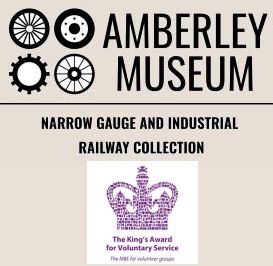

|
October 2010 Now that the restoration work, funded by the Heritage Lottery Fund grant, is nearing completion, relaying the standard gauge track serving the De Witt Kiln, on the original trackbed, is being tackled.
Members of the RailGroup helped out with laying, spiking and fishplating the rails onto new timber sleepers. The rail is lightweight by main-line standards being only 50/52 lbs/yd.
The contrast between this light flat bottomed rail and the bullhead rail, seen on the adjacent track, is immediately obvious
Two views along the loading platform towards the buffer stops.
Some of Pepper's original 52lb rail was discovered buried in the ground and reused. The markings indicate that the rail was rolled by the North Yorkshire Iron Company in 1875 for the New Zealand Railways.
We contacted the The North Yorkshire Moors Railway whose
archivist Mark Sissons found the North Yorkshire Iron Company
Limited to be a short lived company (1863-1875) who had a
premises at Thornaby, then the North Riding of Yorkshire, now
Teesside. The assets of the company were listed and sold by the
liquidator John Robinson on the 27 December 1875 and no doubt
Pepper and Son purchased a portion and made use of the rail
down south.
In discussing the find with Graeme McClare of the New Zealand
and Locomotive Society he confirmed that the rail weight was that
being used at that time for the expansion of a number of 3ft 6in
gauge railways in the 1870ís throughout the country.
So now you know as much as we do!
A view along the north side of the kiln block with the newly rebuilt lean-to clearly visible. The shed on the right can be seen in the old photo at the bottom of this page and until recently it housed the Museum's History of Concrete exhibition which is at present in store, before being re-housed in the future.
Network Rail would be proud of this section.
Looking back towards the kiln, the trackbed has been prepared with a layer of rolled brick hardcore - ballast and track will follow shortly.
It has already been proved that the area will still continue to flood at the slightest sign of rain just as it did on Pepper days.
This old photograph was taken in the early 1900s soon after the kiln was built and shows the sidings either side with two of the quarry's locomotives in use, The line continued out of the quarry, past the buildings which now house the Museum offices and then along an embankment (now the Museum entrance path) to the exchange sidings at Amberley Station
The Aveling Porter locomotive outside the quarry offices.
|
